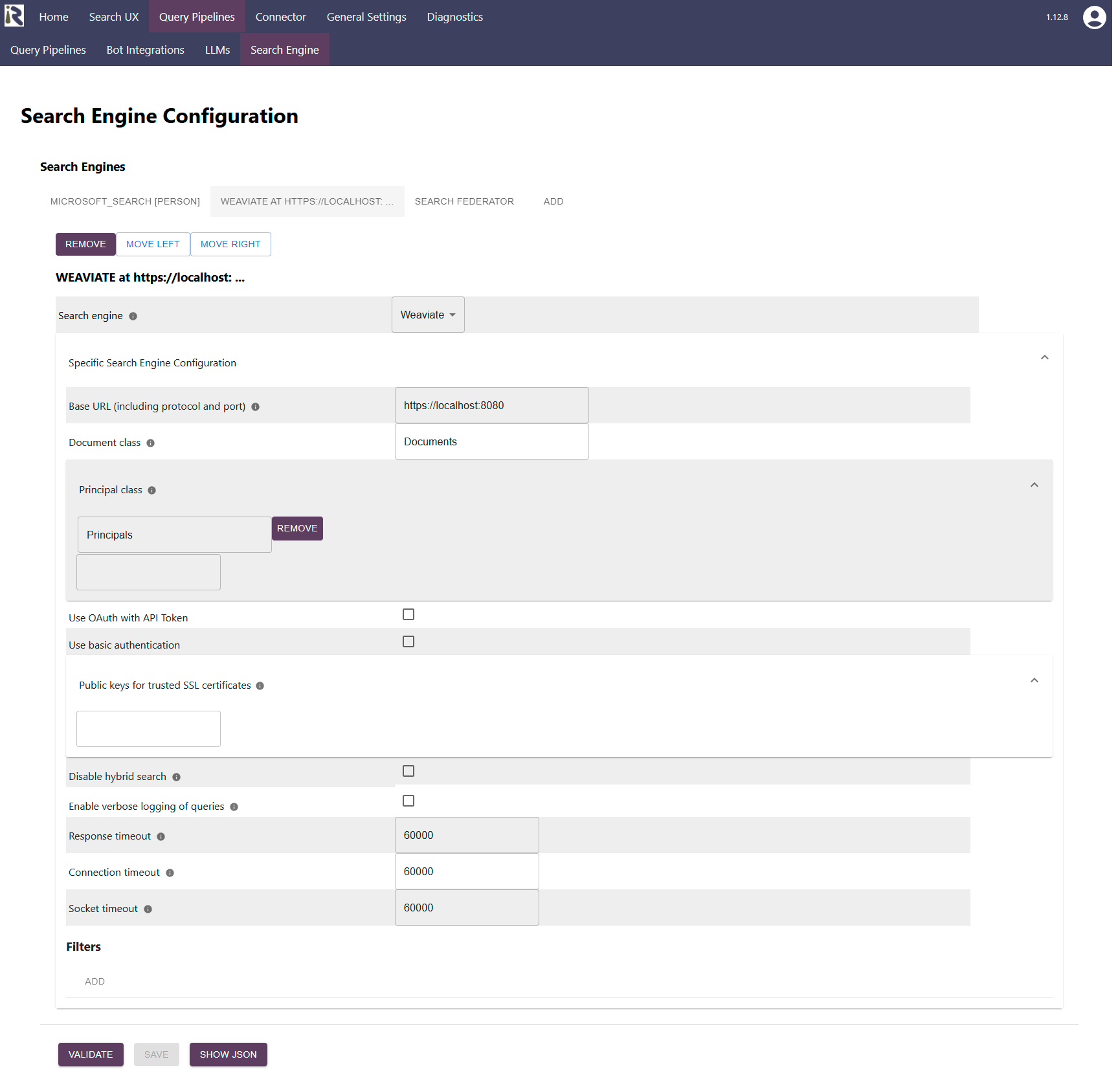Documentation
Weaviate - Query Configuration
You can access this dialog via Search UX and by adding a Weaviate instance as search engine.

Weaviate url. Names the FQDN to the Weaviate instance. It must include the protocol (http or https), port and if applicable also a path.
Document class name: this is the name of the document class.
Principal class name: this is the name of the principal classes. The principal class is where the connector stored user-group relationships and which is used to construct the ACL entries for the user. You can provide multiple class names, if you use multiple connectors to feed data into the document class.
Use API token: if you configured OAuth for securing direct access to the instance, check this box.
API token: is the API token (without bearer) which the connector uses to authenticate against the Weaviate instance.
Use basic authentication: if you configured basic authentication for securing direct access to the instance, check this box.
Username: is the username for basic auth.
Password: is the according password.
Public keys for SSL certificates: this configuration is needed, if you run the environment with self-signed certificates, or certificates which are not known to the Java key store.
We use a straight-forward approach to validate SSL certificates. In order to render a certificate valid, add the modulus of the public key into this text field. You can access this modulus by viewing the certificate within the browser.

Response timeout: determines the timeout when waiting for OpenSearch responses in milliseconds.
Connection timeout: determines the timeout when waiting for connections to OpenSearch in milliseconds.
Filters (aka refiners aka aggregations)
Please note that Weaviate does supports filtering. But it does not support generating possible filter values and counts. Therefore this option should not be used.
When finished with setting these fields, click on validate and save. If you observe any issues, then the validator will let you know or you can find more insights in the log files.